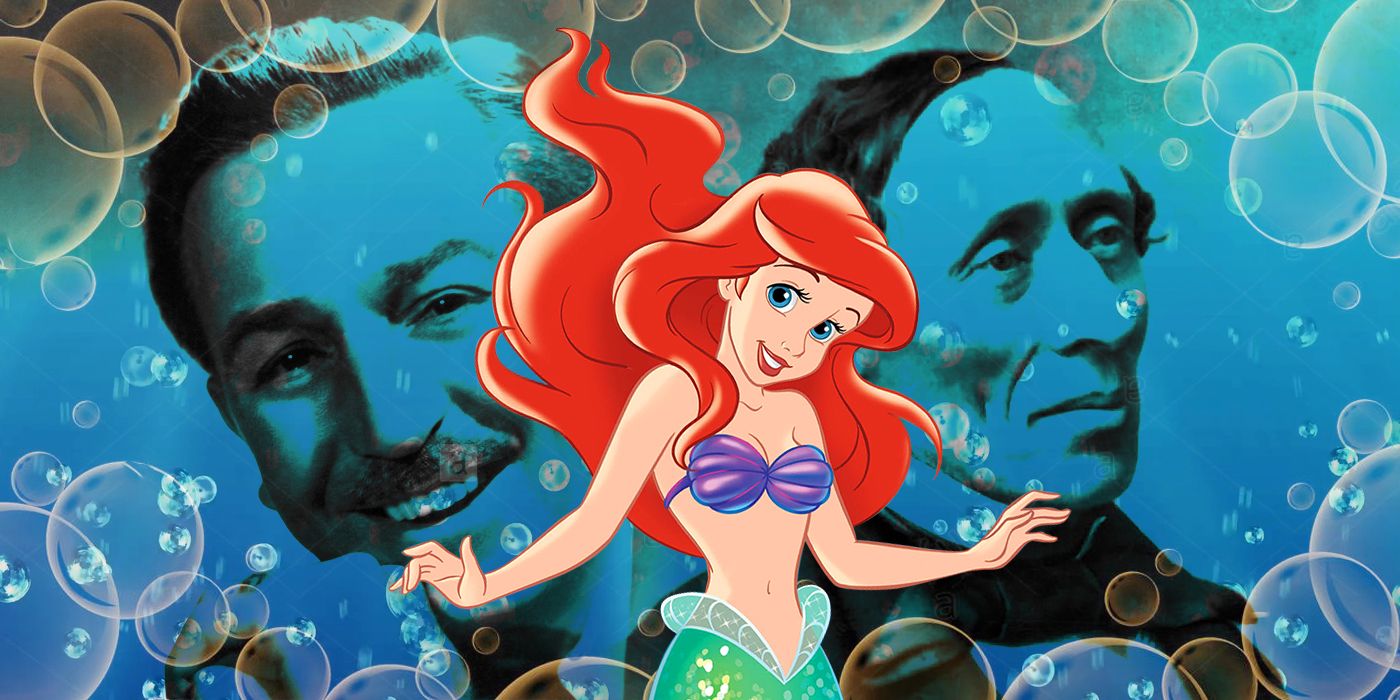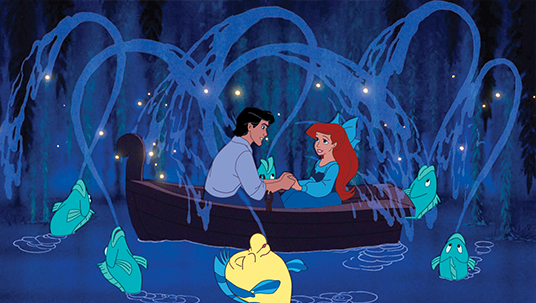

- #The little mermaid cartoon movie based on actual story software#
- #The little mermaid cartoon movie based on actual story tv#

The amount of time and money spent on the film worried Katzenberg, who warned his directors that since it was a “girl’s film”, it wasn’t likely to make as much money as the more family-oriented OLIVER AND COMPANY. While 1990’s THE RESCUERS DOWN UNDER would be the first Disney film to fully use the CAPS process, the penultimate scene of THE LITTLE MERMAID was one of a number of experimental scenes intended to test its effectiveness.ĭespite this, THE LITTLE MERMAID was one of the most technically challenging (and expensive) Disney films for decades, requiring the founding of a while new animation facility at Lake Buena Vista, Florida, and they even outsourced some work to Pacific Rim Productions in Beijing, mostly for the underwater bubble effects. If you’ve ever used Photoshop to colour in a pencil drawing, or animated using Flash, it’s the same basic principle.
#The little mermaid cartoon movie based on actual story software#
The coloured frames are then combined with the scanned backgrounds in software that allows for camera positioning and movement, multiplane effects, and any number of other effects developed further down the line – including the blending of two and three-dimensional elements. Instead, the animators’ original drawings and background art were scanned into a computer, where they’re inked and painted digitally with an unlimited colour palate and new visual effects such as transparency and colour blending. In a nutshell, CAPS is a system which computerises the whole process of transferring animated drawings to celluloid using ink or xerography and painting the reverse side with paint. THE LITTLE MERMAID was one of the first feature films to utilise a new process, developed by Pixar, called Computer Animation Production System. It’s quite dark and surprisingly vicious, and quite heavy emotionally, but does have some cracking sound design. It was then remade in 1939, as a more faithful telling, and is a surprisingly modern take on the story, with the Ducklings’ “Parents” quite obviously arguing over his parentage. It’s not the most faithful adaptation in this version, the Duckling is born to a farmyard chicken, and saves his adoptive family from both a tornado and a raging river/waterfall. It’s notable for being the first Silly Symphony that focussed on an actual plot, rather than the animators showing off to musical accompaniment.


INTERESTING INTERLUDE: Disney’s first Andersen adaptation was a 1931 Silly Symphonies of The Ugly Duckling. Katzenberg then changed his mind and got the ball rolling on both THE LITTLE MERMAID and OLIVER & COMPANY.
#The little mermaid cartoon movie based on actual story tv#
Anyway, Katzenberg passed, since they were already working on a mermaid movie, a sequel to SPLASH (1984) that got made into a TV movie in 1988 without either of its original stars. The idea was dropped for a number of reasons, but was given a second shot when Clements found a copy of the tale in a bookstore and created a treatment to then CEO Jeffrey Katzenberg (you remember, the guy that fobbed them off and started Dreamworks when he didn’t get that promotion he wanted). The genesis of Disney’s THE LITTLE MERMAID began back in the 1930s, as part of a package film of short tales based on the work of Hans Christian Andersen. This week, we dive under the sea to be part of the world of THE LITTLE MERMAID.Īnd so began the Disney Renaissance after almost two decades of misfires and failures, the duumvirate of Clements and Musker brought forth a string of some of Disney’s greatest and best-loved animated films. From SNOW WHITE AND THE SEVEN DWARFS to FROZEN, from the Disney Renaissance of the 1990s, to the wilderness years of the 1970s, each will be looked at with a loving, if critical eye. Every week of 2013, THN brings you a retrospective of a Walt Disney Animated Classic.


 0 kommentar(er)
0 kommentar(er)
